Carlisle Cathedral
Religious Place In Carlisle, Cumbria
A small Cathedral but perfectly (almost) formed with a celestial ceiling.
A visit to Carlisle surely means a peak at the Cathedral, and as the saying goes 'Good things come in small packages'. It is purportedly the 2nd smallest Cathedral in England. I believe the smallest is in Oxford?
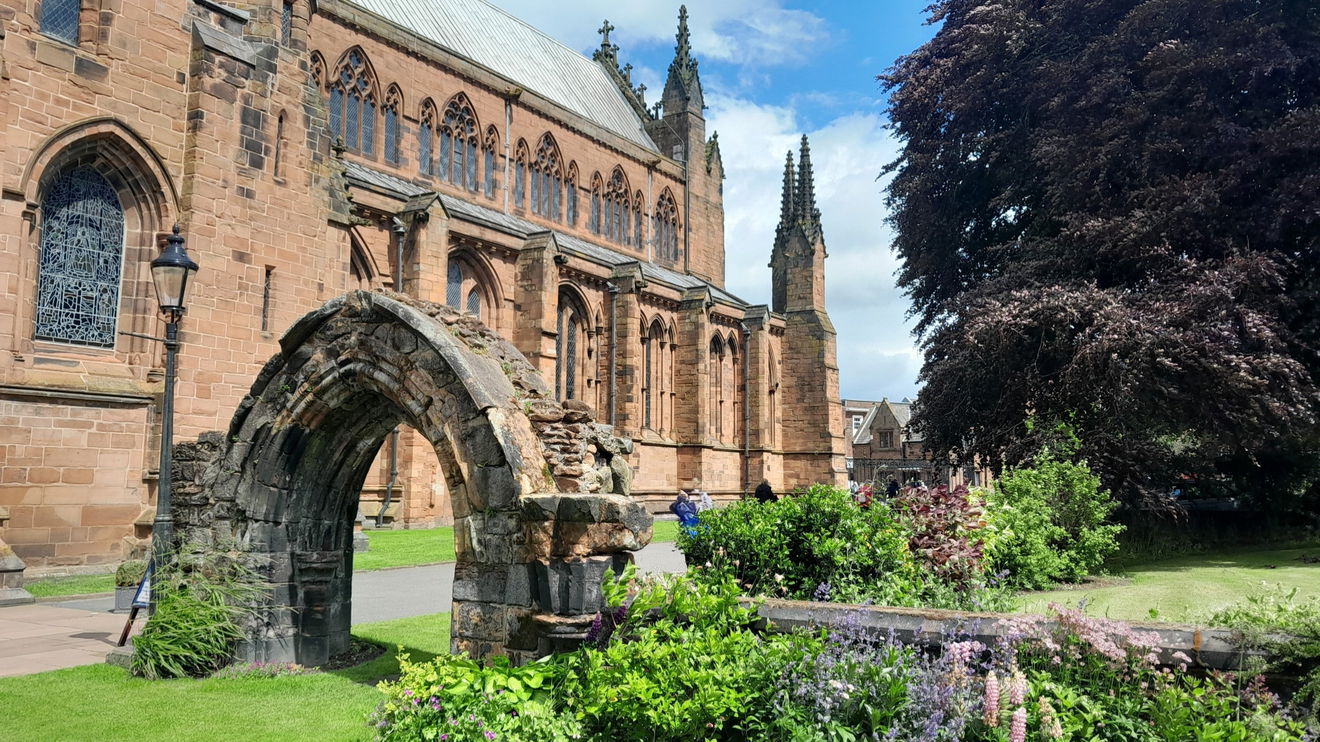
During the 11th and 12th centuries, there was a tempestuous seesaw of control for Carlisle between Scotland and England.
Carlisle was in the Scottish domain when the Domesday book was compiled in 1086. The area was conquered from the Scots by William I 's son William II (1057 to 1100) AKA Rufus meaning red, so it is assumed he had ginger hair. It is said he had a bellicose temperament, so these conditions suited him. After he died, his younger brother became Henry I (1068 to 1135) and in 1122 founded an Augustinian Priory here.
The information board gives the lowdown, and you can see one arch that is all that remains of the priory.
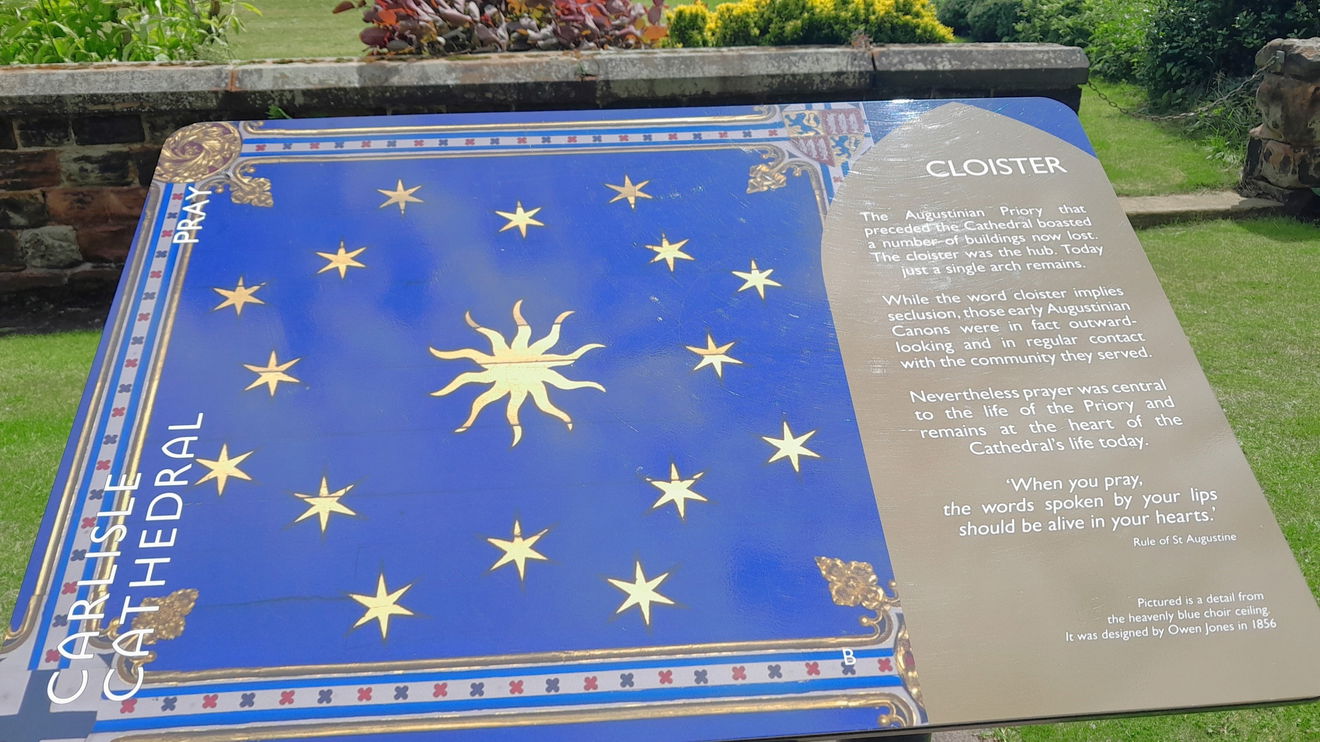
Eleven years later in 1133, the church became a cathedral. You can still see some of the handsome 12th-century stonework. It is local red and calciferous squared sandstone blocks. Much of Carlisle used this in its buildings which can still be seen today.
Henry I was exerting his authority to contain those feisty Scots only 10 miles away and forever attacking England. He died in 1135 and King David I of Scotland (1084 to 1153) took the area under his watch until Henry II (1133 to 1189) took it back in 1157. Since then, it has been in England, but was still raided by the Scots.
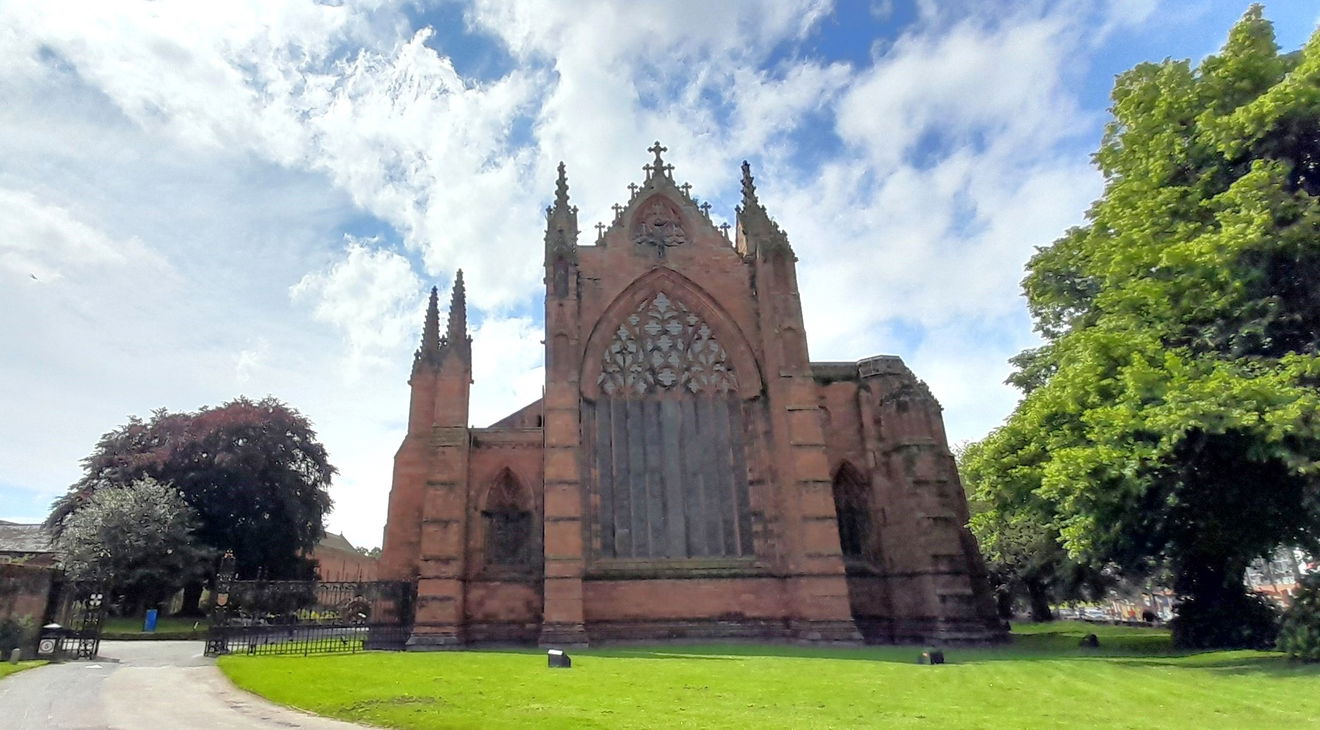
A Dominican and Franciscan friaries were founded near the Cathedral in 1233, so it was certainly an ecclesiastical mecca.
Some alterations to the bit in front of the altar called the choir were in progress until a catastrophic fire in the city in 1292 caused the cathedral to be partly rebuilt and refurbished.
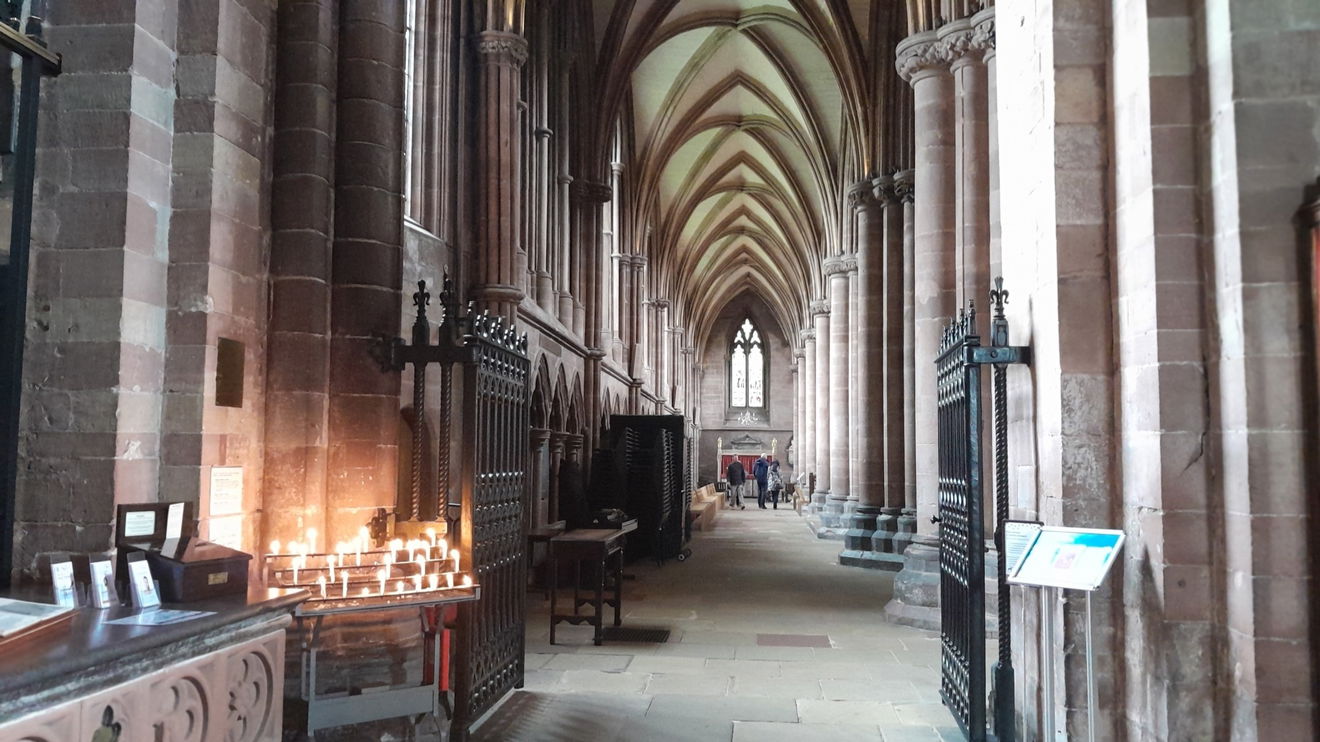
Edward I (1239 to 1307) came to town in 1296 and set up court, held his parliament in Carlisle, and worshiped at the Cathedral. This lasted 3 months.
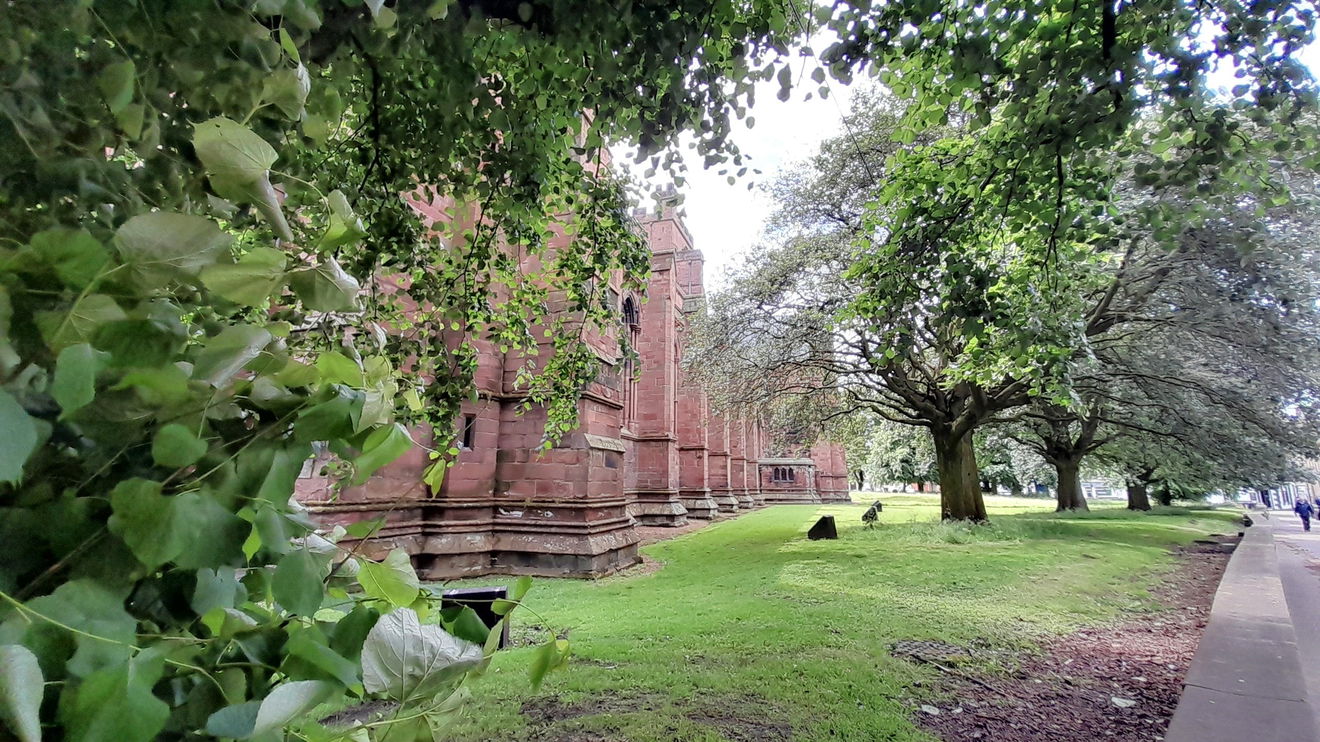
Inside the cathedral, a detailed tracery (window with whirly stone framework) in the east end was in place around 1350. The stained glass window is complex and is a big 'un at 51 feet high and 26 feet wide. According to Wikipedia 'It has nine lights, and tracery, which, it has been calculated, was drafted from 263 points.' That is impressive, eh? There is original stained glass at the top depicting the last judgment of Jesus. The lower 9 'Lights' depict the life of Christ and date from 1861.


The reformation saw that the cathedral was surrendered to the Crown in 1540. Henry VIII (1491 to 1547) a year later Founded the Cathedral Church of the Holy and Undivided Trinity; this is its official title.
During Elizabeth I (1533 to 1603) and James I's (1566 to 1625) reign the Deanery was secularised, referring to transforming ecclesiastical possessions for civil purposes.

Much of the Cathedral got trashed in the Civil War. The Parliamentary forces of Scotland in 1644 besieged the city and the troops pulled down much of the nave, cloisters, and prebendal house to reinforce the Castle.

There are many pleasing aspects here and the barrel-vaulted celestial ceiling is a marvellous creation by Owen Jones (1809 to 1874). It replaced a false ceiling from 1764 and was painted blue with stars and coats-of-arms of local gentry in 1856. It is close in likeness to the medieval period ceiling. It was during this period (1853 to 1857) that a major restoration was undertaken.
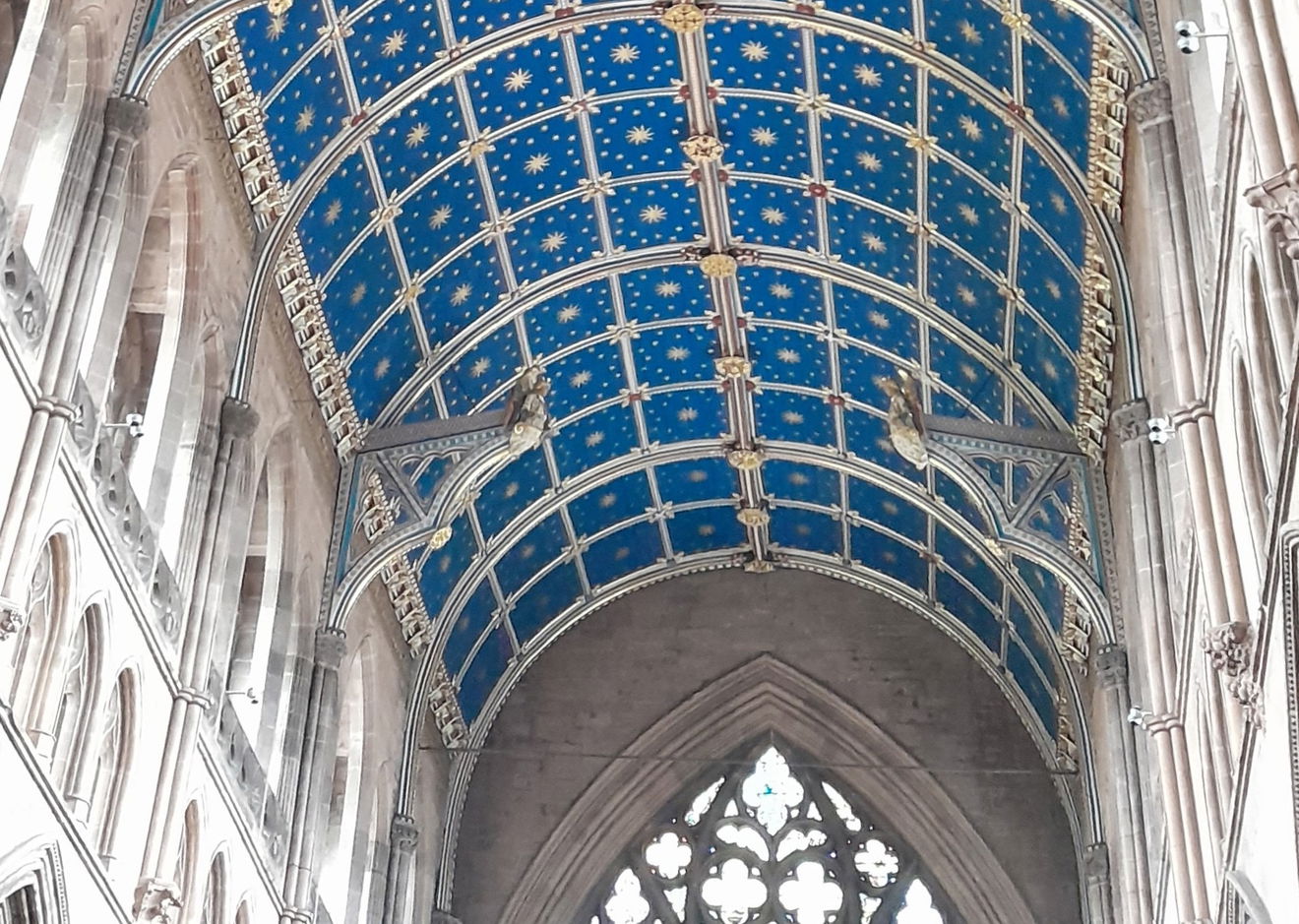
Below the magnificent tracery of stained glass windows there is an altarpiece which portray Christ's passion with infancy and resurrection themes. This is known as The Brougham Triptych and was made in Antwerp circa 1520.

There is much to admire in the Choir especially the organ with its 4000 pipes. Notice the ornate carvings and The Bishops Throne is a showstopper, and yes, it is where the Bishop sits. This one was carved out of wood by George Street in 1880.
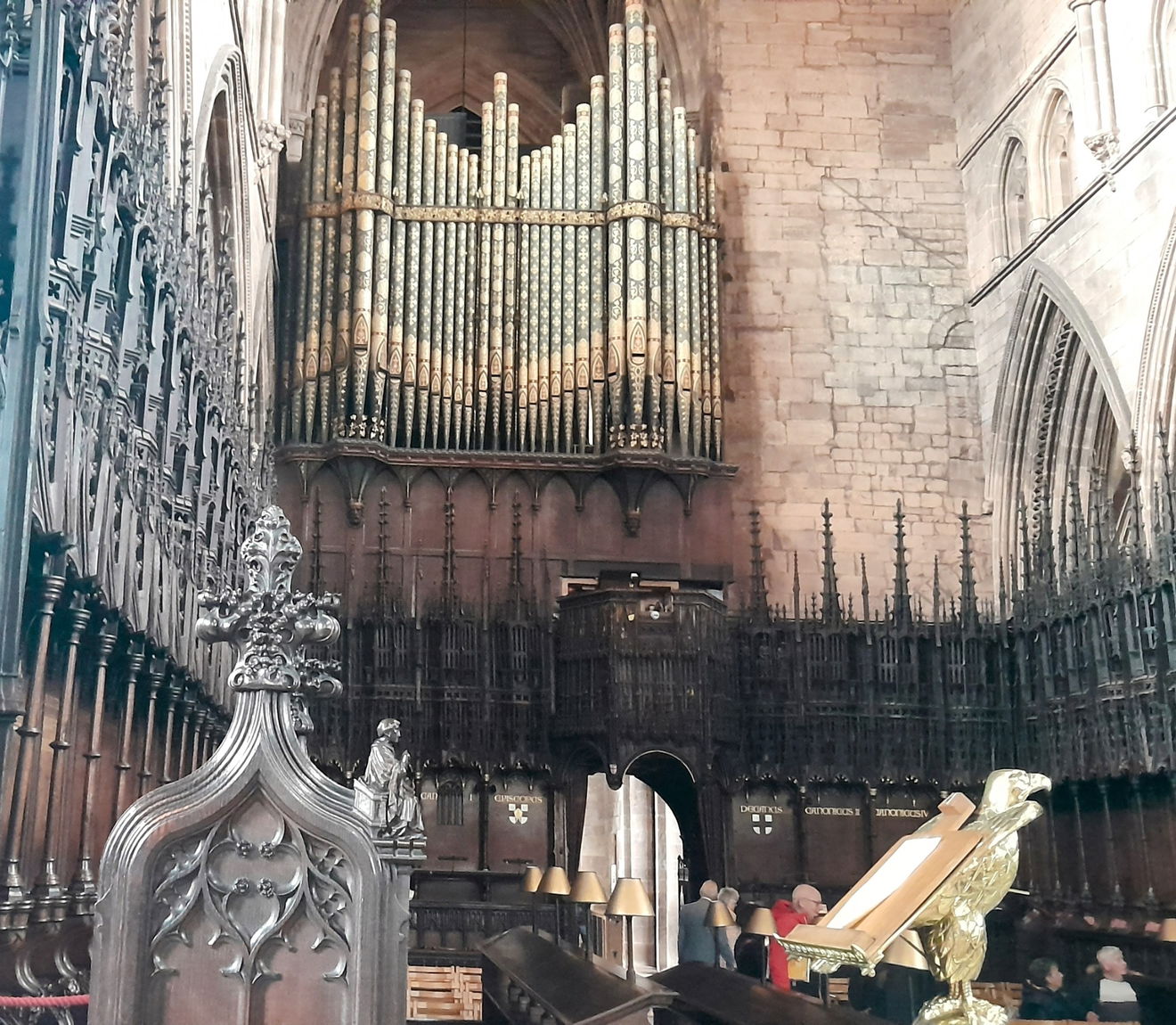
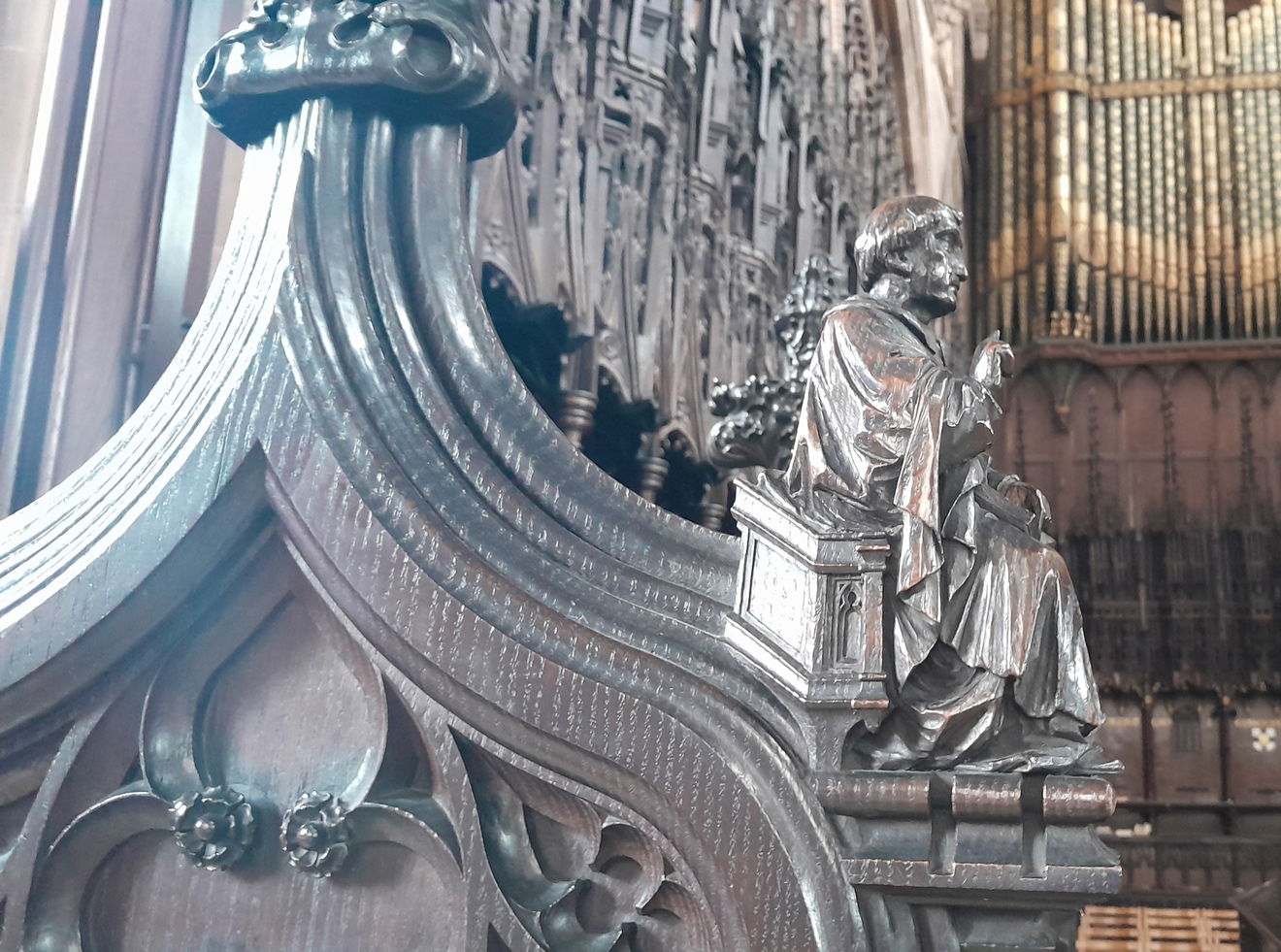
At the back of the choir stalls are 4 painted panels dating from 1485 to 1490. They have depictions of the Twelve Apostles, the lives of St. Anthony of Egypt, the founder of monasticism, St. Augustine of Hippo, and St. Cuthbert of Lindisfarne, To help you recognise them, there are display boards.

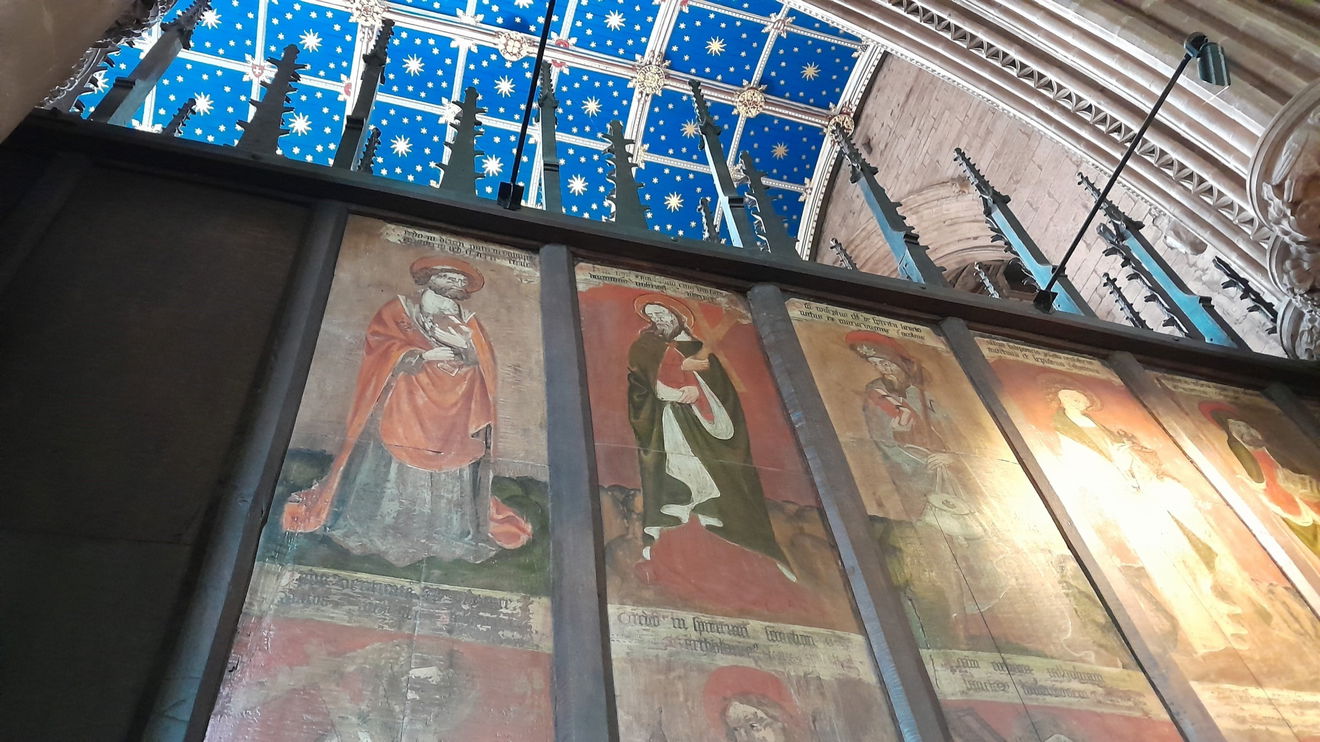

Down below there is a treasury with some interesting artifacts. Ceiling bosses from the 14th Century got my attention and a bell.
It was amusing to find a strategically placed collection box just outside this room..




Take a look outside you see those mighty buttresses and looking up, a steeply pitched lead roof. Refreshments, and loos available in the vicinity.
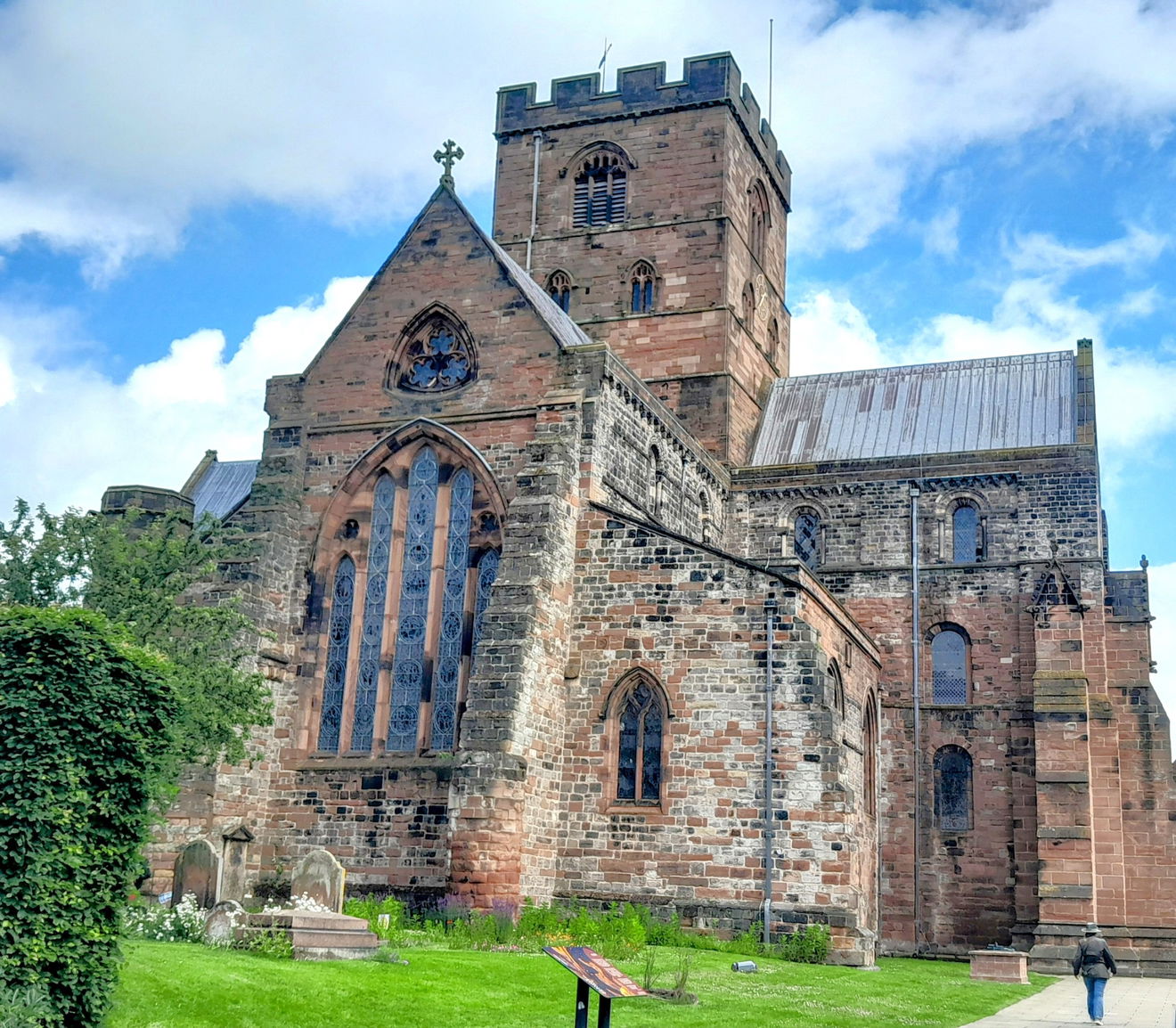
Having now done some research, I missed a few things, so on your visit see if you can spot the wonky pillars due to subsidence, and the gargoyle of George Russell who was a brave policeman. One visit is never enough.
Below is the 'Blessed Virgin and Child' by Josefina de Vasconcellos, which I didn't spot the lacework.
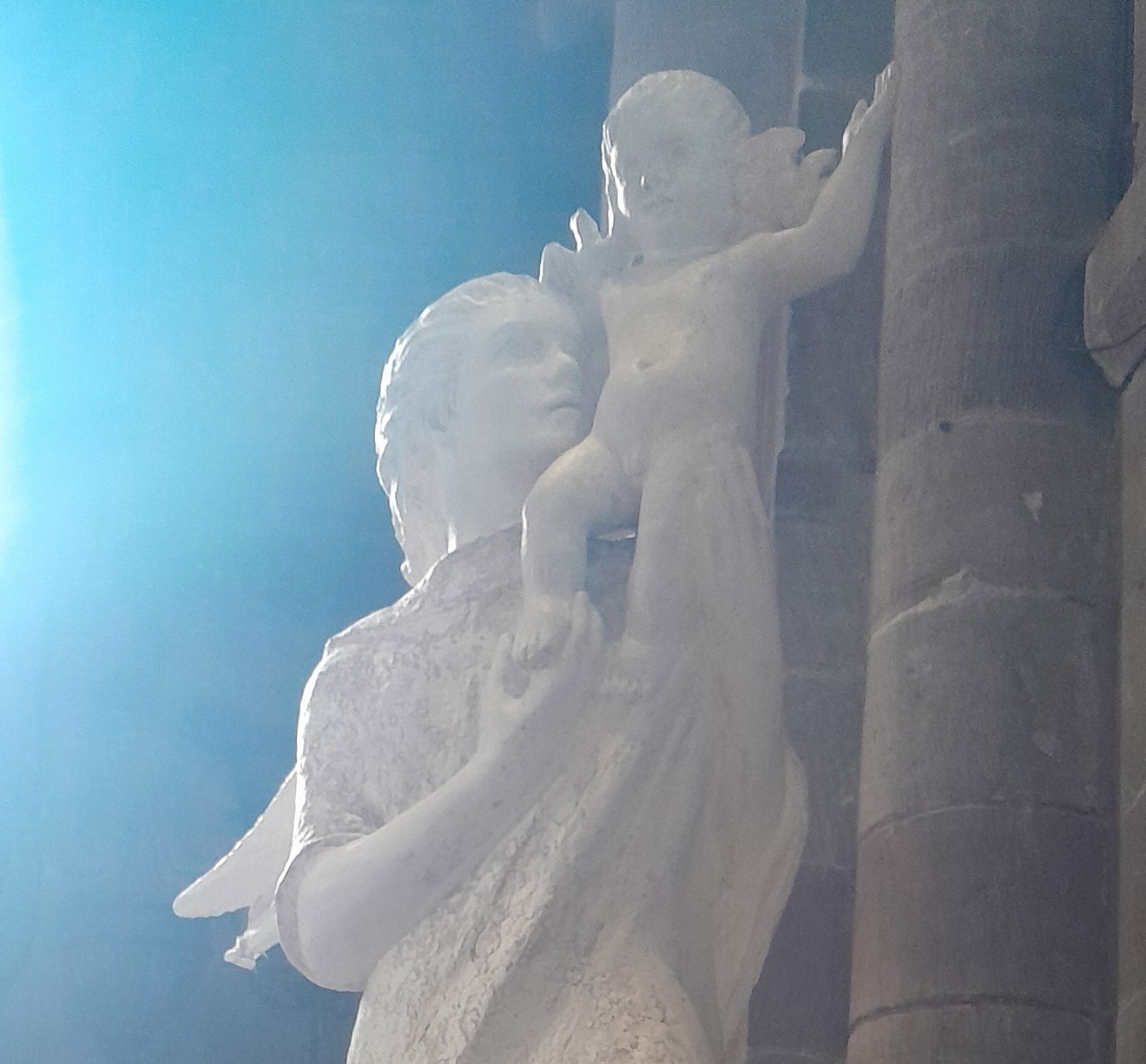
There is so much to see at Carlisle Cathedral, so keep your eyes peeled next time you visit.
Get 3 points if you have visited this place. Already visited by 99 VIPs.
Login to the VIP area to add places to your bucket list, mark them as visited and more importantly see where you rank on the league table.
How To Find Carlisle Cathedral
Where Is Carlisle Cathedral?
Lat / Long
54.894634, -2.938484
What three words
Where To Park For Carlisle Cathedral?
Lat / Long
54.892963, -2.938344
What three words
West Walls Car park is most convenient for the City. Charges do apply.
Contributed by Rosalind Parker
Thank you for reading. I hope it sparks your interest. It’s always a pleasure to get out and explore, whatever the weather. I enjoy uncovering little snippets of information, especially when they’re obscure, amusing, or meaningful. All photos were taken on a mobile phone.
More Places from Rosalind
More Places In Carlisle
Find more fabulous places in Carlisle, Cumbria and if you know of a place we haven't listed, then let us know.

Bitts Park
Landscape Carlisle CumbriaVictorian Park alongside the River Eden with contemporary and traditional artwork, statues, and musical instruments.
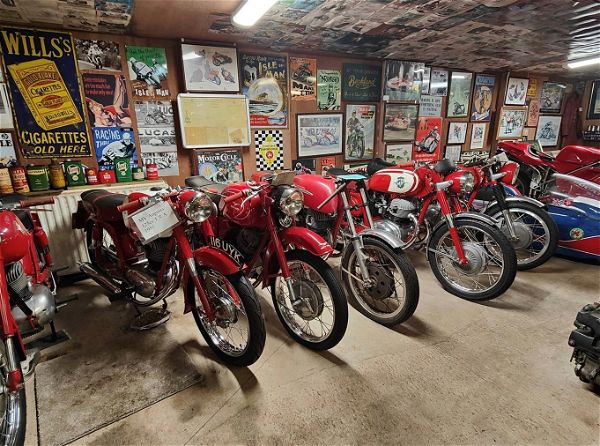
Mike Barry Motorcycle Museum
Museum Carlisle CumbriaA museum with a truckload of old bikes beautifully restored by past racer Mike Barry.
More Religious Places
So this religious place wasn't enough and you want more? Don't worry we have you covered.
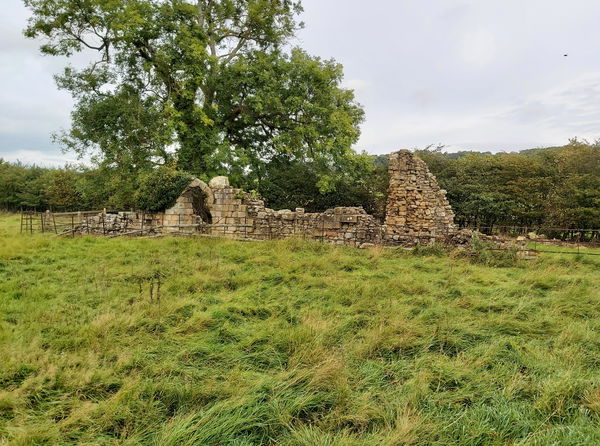
St Leonard's Hospital Chapel
Religious Place Alnwick NorthumberlandThe ruined chapel of an old hospital located in Denwick near to Alnwick Castle.

St Aidans Church Fourstones
Religious Place Hexham NorthumberlandA small wooden "off the peg" church in Fourstones, Northumberland. One of only two wooden Victorian missions in the country.

St Andrew's Auld Kirk
Religious Place East Lothian BordersThe remains of St Andrew's Kirk, dating from around the 1100s and with links to the North Berwick Witch Trials.
Never Miss A Fabulous Place
If you are afraid of missing out on all the fabulous places we post, or just want to be the first to know, then sign up to the Fabulous North.
Each week we will email you all the brand new places that we visit.
Sign Up To AlertsFind Us On Facebook
We post all our new places daily on our Facebook Groups page, so join the group today and be notified when we add a new place.
Join Our Facebook GroupCarlisle Cathedral was listed in Religious Place // Cumbria // Carlisle


